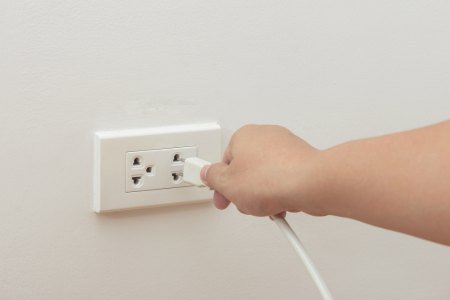How much do you save if you turn off the light in your home for an hour?


Energy consumption is one of the biggest causes of carbon dioxide emissions on Earth. Every time we leave a light on, we are helping to accelerate a major problem: the dreaded climate change. Do you know what happens when you turn off the light in your home for at least an hour?
With a simple change in your habits and and in the ones of your family you put in your part to improve the health of the planet and, therefore, of all the beings that we live in her. Just as sowing a tree is a wonderful act, so are turning it off, disconnecting, reusing and recycling.
Think about your house. Ask yourself how many appliances you have turned on at the same time and if you actually use them, if they are needed. Are you working on the laptop while watching TV? And if you add that you forgot to turn off the bathroom light and that when you went to the kitchen for something to eat you left the refrigerator open several minutes. The list can go on, right?
Now imagine that you turn off the light in your house for an hour. Have you thought how much you can save the planet and, incidentally, your pocket?

House and office lightning
Bulbs and lamps represent about 20% of your light bill. Think about what would happen if you put out unnecessary lights.
Let's do some calculations first. Imagine one of your 100W (watt) light bulbs. Now, 100W is equal to 0.1 kW (kilowatts). Your energy provider charges you based on the consumption of kW per hour. The price varies, but suppose it charges you $ 1 per kW per hour. So if you have a 100 watt bulb on for an hour you will have consumed 0.1 kW, which will cost you $ 1 USD. How many light bulbs do you have? Do you require them all?

Imagine you have six bulbs on for six hours each day. You would be spending $ 6 USD per hour and $ 36 USD for the six hours (ie every day), if this is replicated all week, would be $ 252 USD. The whole year would cost you about $ 13,104 USD. Beyond this, think not only of money, but of saving the planet. The consumption of 100 kW per hour produces 65 kilograms of carbon dioxide.
Using household appliances
Your fridge is one of the most energy consuming appliances. Keep away from stove, oven and sunlight. Also, be sure to close tightly; If the packaging is defective it could spend up to three times more energy. Also, check that the thermostat of this appliance suits your climate as each degree of more you put will increase consumption up to 5%.

The computer is one of the devices that, even if only connected, will continue to consume energy. Depending on the equipment, it can consume on average 15 W when off, which is equivalent to having a lamp on. Disconnect your appliances after use. You can attribute to them at least 15% of the monthly consumption that appears on your utility bill.
Tips to avoid wasting energy
Replace bulbs with saver light bulbs. If you change a 100 W bulb to a saver one, you can go from 180 kW per hour in a year to 36 kW per hour at the same time. An energy saving of 80%!
Make the most of natural light and, when you leave a room, turn off the light.
When you buy an appliance, look at its energy efficiency. The letter A and green color are showing that it is an efficient device (there are some that can have A+, A++ or A+++, which means they are very energy efficient). On the other hand, appliances that have letter D or red color are less efficient.
Do not turn the iron on for a single garment. This is one of the most energy consuming appliances. Having the iron switched on for one hour may be equivalent to having the TV set on for 20 hours, so use it responsibly.
https://cuidarelplaneta.wordpress.com/
http://www.greenpeace.org/mexico/es/Actua/Ecotips/40-tips-para-cuidar-el-planeta/
Nice Job!
Keep the good work up!
Thanks for sharing@juanrosellares